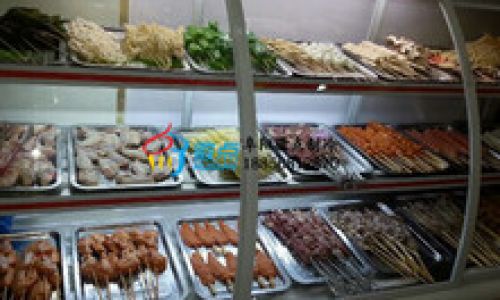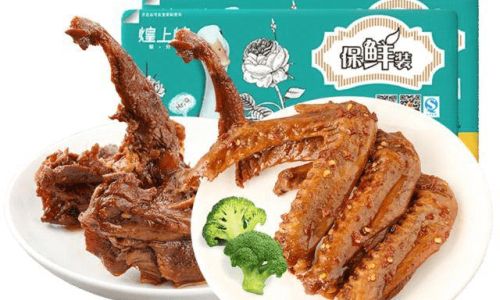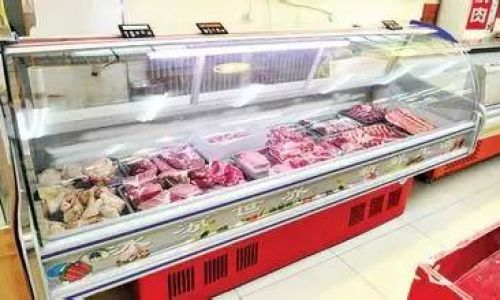Table of content
In the fast-paced world of modern cuisine, ready-to-eat (RTE) foods have become a staple for busy individuals seeking convenient meal solutions. From delicatessen counters to supermarket shelves, these pre-prepared dishes offer a wide array of flavors and nutritional benefits, catering to diverse dietary preferences. However, the challenge lies in maintaining their freshness and quality from production to consumption. Freshness is paramount in ensuring the safety, taste, and overall appeal of RTE foods. This article delves into the intricacies of preserving the freshness of RTE foods, exploring various strategies that can effectively extend their shelf life while preserving their nutritional integrity and delicious flavors.

Understanding the Importance of Freshness in RTE Foods
Freshness in RTE foods is not merely about the absence of spoilage; it encompasses the retention of nutritional value, texture, aroma, and color. These attributes collectively contribute to the overall eating experience, influencing consumer satisfaction and loyalty. Moreover, maintaining freshness is crucial for food safety, as stale or contaminated RTE foods can pose health risks. Therefore, manufacturers and retailers must adopt robust preservation techniques to ensure that RTE foods remain appealing and safe for consumption throughout their shelf life.
Factors Affecting the Shelf Life of RTE Foods
Several factors influence the shelf life of RTE foods, including:
-
Type of Ingredients: The composition of RTE foods plays a pivotal role. Ingredients with high moisture content, fats, and proteins are more susceptible to microbial growth, oxidation, and enzymatic reactions, leading to shorter shelf lives.
-
Packaging: Packaging acts as a barrier between the food and external contaminants, such as oxygen, moisture, and microorganisms. The type of packaging material, its permeability, and the presence of preservatives or modifiers within the packaging significantly impact the shelf life.

-
Storage Conditions: Temperature, humidity, and light exposure are critical environmental factors. Improper storage conditions can accelerate the deterioration process, reducing the shelf life and quality of RTE foods.
-
Processing Techniques: Methods used during food preparation, such as cooking, chilling, freezing, and pasteurization, affect the microbial load and stability of RTE foods. Effective processing techniques can significantly extend shelf life by inhibiting microbial growth and enzymatic activity.
Strategies for Preserving the Freshness of RTE Foods
To address these challenges and preserve the freshness of RTE foods, a multifaceted approach is necessary. Here are some effective strategies:
Optimal Ingredient Selection and Formulation
Choosing ingredients with a lower susceptibility to spoilage is the first step in preserving freshness. Ingredients rich in antioxidants, such as vitamins E and C, and natural preservatives like salt, sugar, and vinegar, can help extend shelf life. Additionally, formulating RTE foods with a balance of moisture, fats, and proteins can minimize the risk of microbial growth and oxidation. For instance, using lean meats and low-fat dairy products can reduce the likelihood of lipid peroxidation, which leads to rancidity.

Advanced Packaging Technologies
Packaging has evolved beyond traditional materials like plastic and aluminum foil. Modern packaging technologies, such as modified atmosphere packaging (MAP) and active packaging, offer superior protection against spoilage. MAP involves replacing the air in the packaging with a controlled atmosphere of gases (e.g., nitrogen, carbon dioxide, and oxygen) to slow down microbial growth and oxidation. Active packaging, on the other hand, incorporates active components like antioxidants, antimicrobials, and ethylene scavengers into the packaging material to further extend shelf life.
Temperature Control and Cold Chain Management
Temperature is a critical factor in preserving the freshness of RTE foods. Maintaining a consistent cold chain from production to distribution and retail is essential. This involves storing RTE foods at temperatures below their optimal growth range for microorganisms, typically between 2°C and 8°C for chilled products and below -18°C for frozen items. Implementing temperature monitoring systems and adhering to strict hygiene protocols can help minimize the risk of contamination and spoilage.
High-Pressure Processing (HPP)
HPP is an emerging technology that uses high pressure, rather than heat, to inactivate microorganisms in RTE foods. This process preserves the natural texture, color, and flavor of foods while extending their shelf life. HPP is particularly effective for perishable products like fresh fruits, vegetables, and meats, as it does not alter their nutritional profile significantly.
Irradiation and Ultraviolet (UV) Treatment
Irradiation and UV treatment are physical methods used to reduce microbial loads on RTE foods. Irradiation involves exposing foods to ionizing radiation to kill pathogens and extend shelf life. UV treatment, on the other hand, uses ultraviolet light to inactivate microorganisms on the surface of foods. Both methods are safe and approved by various food regulatory bodies, offering an alternative to chemical preservatives.

Use of Natural Preservatives
Consumer preference for clean-label products has led to an increased focus on natural preservatives. Extracts from plants, such as rosemary, thyme, and oregano, contain antioxidants and antimicrobials that can help extend the shelf life of RTE foods. These natural preservatives not only enhance food safety but also appeal to health-conscious consumers.
Vacuum and Modified Vacuum Packaging
Vacuum packaging removes oxygen from the packaging environment, creating an anaerobic condition that inhibits aerobic microbial growth. Modified vacuum packaging involves introducing a controlled amount of gas (usually carbon dioxide) to maintain a slight pressure within the package, which can further extend shelf life by reducing oxidation and microbial activity.
Conclusion
Preserving the freshness of RTE foods is a complex yet crucial aspect of the food industry. By adopting a combination of optimal ingredient selection, advanced packaging technologies, temperature control, high-pressure processing, irradiation, natural preservatives, and vacuum packaging, manufacturers and retailers can significantly extend the shelf life of RTE foods while maintaining their nutritional value, taste, and safety. As consumer preferences continue to evolve, the focus on sustainable and clean-label preservation methods will become even more critical. By staying abreast of emerging technologies and trends, the food industry can ensure that RTE foods remain a convenient, safe, and enjoyable part of modern diets.






0 comments